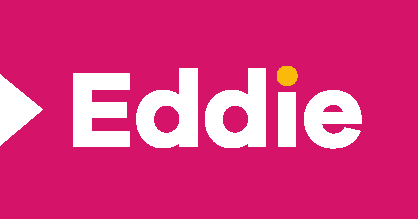An effective corporate video successfully communicates your message clearly, engages viewers authentically, and achieves business objectives. The most impactful corporate videos combine professional production quality with genuine content that resonates with the intended audience. What separates successful corporate videos from forgettable ones is their focus on viewer benefit rather than self-promotion, strategic alignment with business goals, and appropriate length for the platform and purpose. Professional editing elevates raw footage into compelling visual storytelling that drives action.
What Makes a Corporate Video Effective?
An effective corporate video combines clarity of message with professional production quality while maintaining authenticity. The most impactful corporate videos start with a well-defined objective and speak directly to their target audience’s needs and interests. Rather than focusing on your company, effective videos focus on the viewer’s perspective.
Key elements of effective corporate videos include:
- Professional quality – proper lighting, clear audio, and stable footage
- Authentic content – genuine, relatable material that feels human
- Concise length – respecting viewers’ time with focused messaging
- Strategic alignment – clear connection to specific business objectives
Length is another crucial factor – effective corporate videos respect viewers’ time by delivering their message concisely. A two-minute video that delivers clear value will typically outperform a five-minute video covering the same content.
Finally, the most effective corporate videos align perfectly with specific business objectives, whether that’s explaining a complex product, building brand awareness, or driving conversions. This alignment ensures the video’s content, tone, and call-to-action work together cohesively.
Why Do Most Corporate Videos Fail to Engage Viewers?
Most corporate videos fail because they prioritise company messaging over viewer benefit. When videos become overly promotional or self-congratulatory, viewers quickly lose interest. The most common pitfall is creating content that executives love but target audiences find irrelevant or boring.
Common reasons corporate videos fail:
- Poor audio quality – Viewers will tolerate imperfect visuals, but abandon content with hard-to-hear audio
- Lack of authenticity – Robotic scripts, over-rehearsed performances, or generic stock footage
- Unclear messaging – Covering too many points without a coherent structure
- Inadequate planning – Poor storyboarding and rushed production creating disjointed content
- Self-promotion focus – Prioritizing company messaging over viewer benefit
Lack of authenticity also causes engagement problems. Scripts that sound robotic, overly rehearsed performances, or stock footage that feels generic will fail to create genuine connections with viewers.
Unclear messaging further undermines engagement. When videos try to cover too many points without a coherent structure, viewers become confused about the main takeaway and stop watching.
How Does Video Co-creation Improve Corporate Video Results?
Video co-creation dramatically improves results by combining employee-generated content with professional editing expertise. In this model, your team members record the raw footage while we handle the post-production, resulting in videos that are both authentic and professionally polished.
| Benefit | Description |
|---|---|
| Authenticity | Real team members appear on camera, speaking with genuine knowledge and passion |
| Cost-effectiveness | Eliminates expensive film crews while maintaining professional standards |
| Time efficiency | Team records footage at convenient times without complex scheduling |
| Capability building | Develops valuable video skills within your organization over time |
This approach delivers unmatched authenticity because your actual team members appear on camera, speaking with genuine knowledge and passion about your business. Viewers connect more readily with real employees than with hired actors or spokespeople.
Perhaps most importantly, co-creation builds video production capability within your organisation. As your team gains confidence in recording, they develop valuable skills that improve video quality over time while maintaining the authentic voice that viewers trust.
What Equipment Do You Need for Professional-looking Corporate Videos?
The most essential equipment for professional-looking corporate videos focuses on audio quality rather than expensive cameras. A simple external microphone that connects to your smartphone will immediately elevate your video quality more than any visual upgrade.
Essential equipment checklist:
- External microphone – Lavalier or shotgun mics for clear audio capture
- Lighting solution – Natural window light or affordable LED panels
- Stabilization – Basic tripod or smartphone stabilizer
- Camera – Modern smartphone or entry-level DSLR/mirrorless
- Optional accessories – Wide-angle lens for group shots, basic backdrop
Good lighting makes a tremendous difference but doesn’t require expensive setups. Position subjects facing natural light from windows, or invest in simple LED panel lights that provide even illumination without harsh shadows.
Remember that equipment should serve your message, not complicate it. The co-creation approach works best with simple, reliable setups that allow you to focus on content rather than technical complexities.
How Do You Measure Corporate Video Effectiveness?
Measuring corporate video effectiveness starts with defining clear objectives before production begins. Different videos serve different purposes, and their success metrics should align accordingly. The most useful measurements combine quantitative data with qualitative feedback.
| Video Purpose | Key Considerations |
|---|---|
| Brand Awareness | Audience engagement, content sharing, viewer retention |
| Conversion | Audience response, action completion, business growth |
| Internal Communications | Information retention, behavioral changes, team feedback |
| Thought Leadership | Content engagement, industry reception, new business opportunities |
For awareness-focused videos, track engagement indicators that show how successfully your content captures and maintains audience attention. The proportion of viewers who watch to completion is particularly revealing about content quality.
The most valuable measurement approach tracks performance over time rather than viewing each video in isolation. This allows you to identify trends, learn what works for your specific audience, and continuously improve your corporate video production services.
What Types of Corporate Videos Deliver the Best Results?
The most effective type of corporate video depends entirely on your specific business objectives and target audience. However, certain formats consistently deliver strong results for particular purposes.
High-performing corporate video types:
- Trust-building content – Build credibility through authentic presentations
- Explainer videos – Simplify complex products/services with clear visuals
- Thought leadership content – Position your organization as an industry authority
- Training videos – Standardize information for consistent internal learning
- Company culture videos – Showcase values and environment for recruitment
Trust-building content creates credibility more effectively than self-promotional material. When your organization presents authentic information about your product or service, prospective customers find the message far more credible than standard marketing claims.
The key to success isn’t choosing a single “best” format but strategically deploying different video types throughout the customer journey and internal communications strategy.


